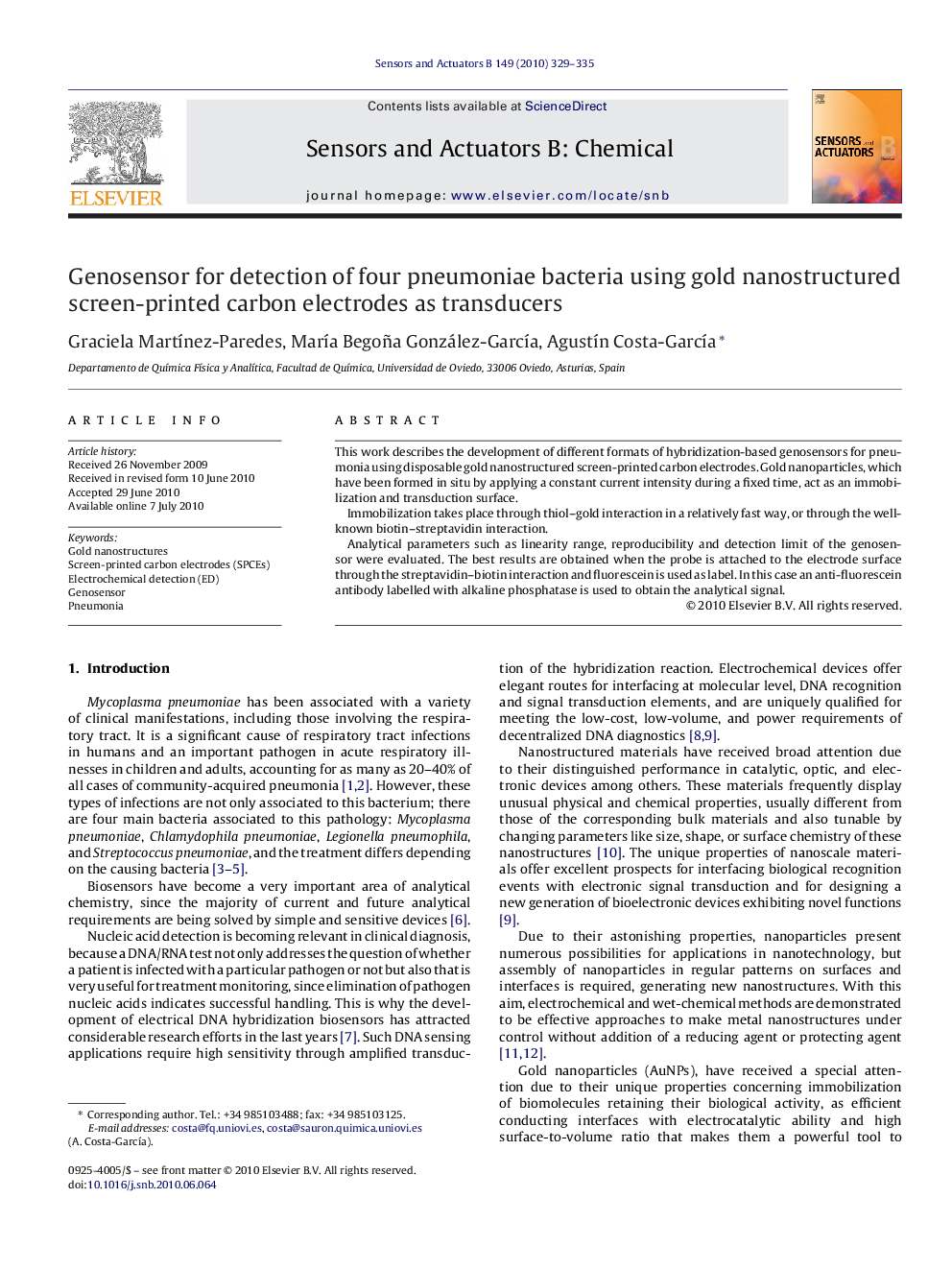| Article ID | Journal | Published Year | Pages | File Type |
|---|---|---|---|---|
| 751183 | Sensors and Actuators B: Chemical | 2010 | 7 Pages |
This work describes the development of different formats of hybridization-based genosensors for pneumonia using disposable gold nanostructured screen-printed carbon electrodes. Gold nanoparticles, which have been formed in situ by applying a constant current intensity during a fixed time, act as an immobilization and transduction surface.Immobilization takes place through thiol–gold interaction in a relatively fast way, or through the well-known biotin–streptavidin interaction.Analytical parameters such as linearity range, reproducibility and detection limit of the genosensor were evaluated. The best results are obtained when the probe is attached to the electrode surface through the streptavidin–biotin interaction and fluorescein is used as label. In this case an anti-fluorescein antibody labelled with alkaline phosphatase is used to obtain the analytical signal.
